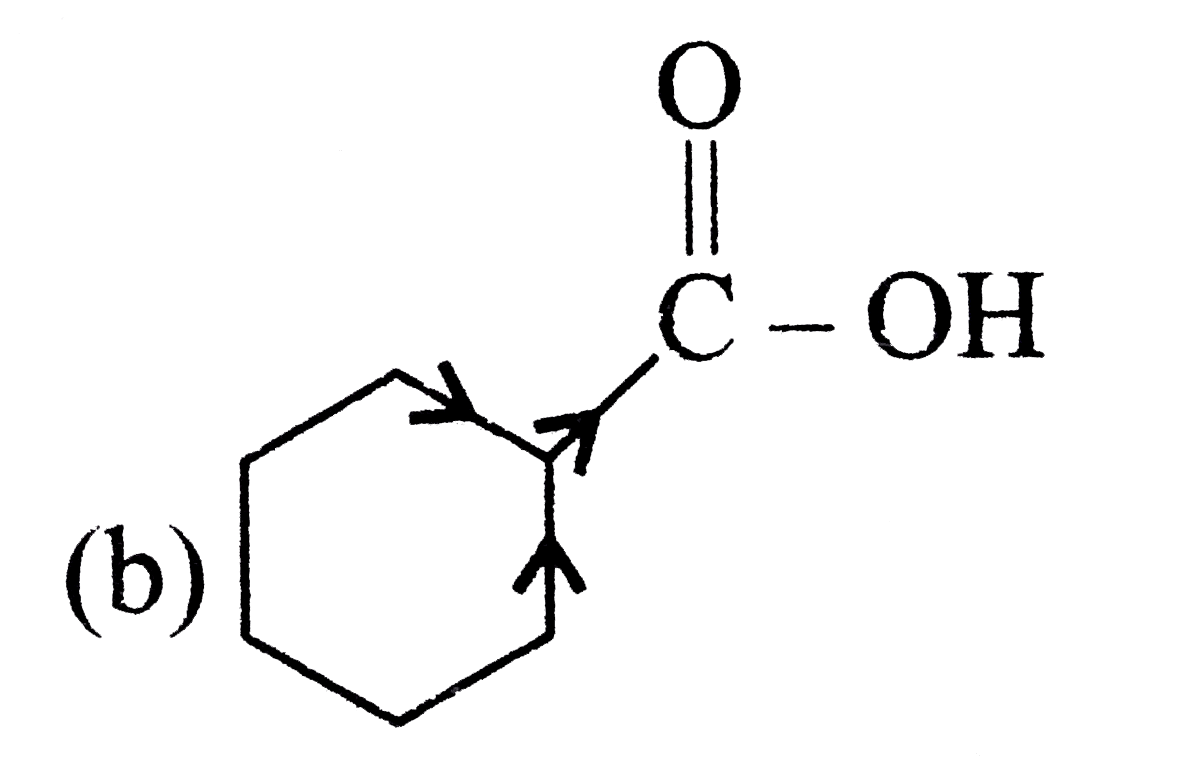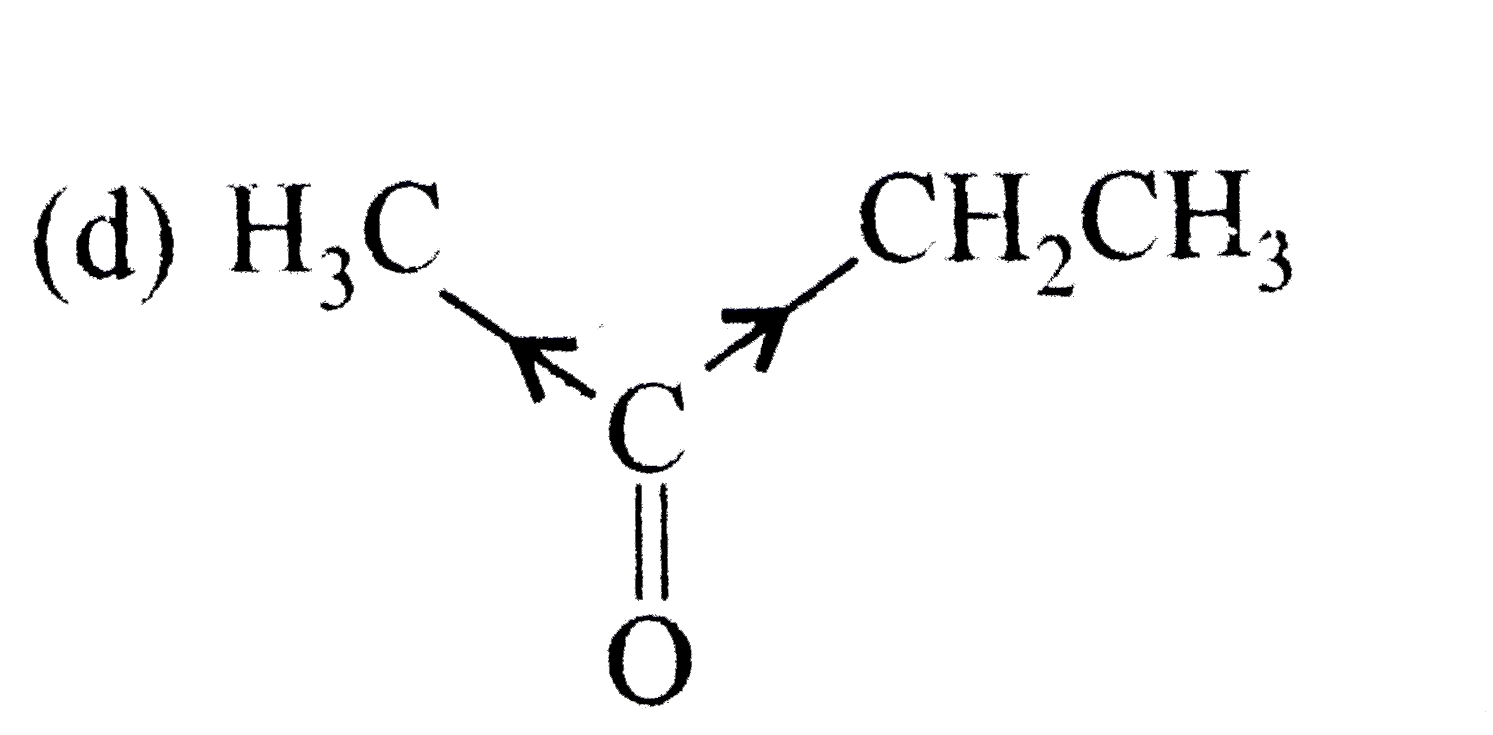In which of the following species, incorrect direction of Inductive effect is shown?




The correct Answer is:D
To determine which species shows an incorrect direction of the inductive effect, we need to analyze the inductive effect in each of the given species. The inductive effect is the permanent polarization of a bond due to the electronegativity difference between atoms.
1. Identify the Species: Let's denote the species as A, B, C, and D. We will analyze each one for the direction of the inductive effect.
2. Analyze Species A:
- Species A has a structure with a -CH3 (methyl) group and an electron-donating group (like an alkyl group).
- The methyl group donates electron density towards the ring, showing a positive inductive effect (+I).
- Direction: Correctly shows the inductive effect.
3. Analyze Species B:
- In Species B, there is an oxygen atom with lone pairs that can participate in resonance.
- Oxygen is more electronegative than carbon, so it pulls electron density towards itself.
- This results in a positive charge density on carbon, indicating a +I effect from the alkyl group.
- Direction: Correctly shows the inductive effect.
4. Analyze Species C:
- In Species C, the oxygen has a negative charge and is involved in resonance.
- The resonance increases electron density on the carbon atom.
- Since carbon is less electronegative, it can handle the increased electron density, and it shares this with neighboring groups.
- Direction: Correctly shows the inductive effect.
5. Analyze Species D:
- In Species D, the oxygen atom pulls electrons from carbon due to its higher electronegativity.
- This leads to an increase in positive charge density on carbon.
- However, the presence of an alkyl group (which is typically electron-donating) should not allow the oxygen to behave like a -I effect.
- Instead, the alkyl group should provide a +I effect, but here it is behaving incorrectly as a -I effect.
- Direction: Incorrectly shows the inductive effect.
6. Conclusion: Based on the analysis, Species D shows an incorrect direction of the inductive effect.
Final Answer:
The species that shows an incorrect direction of the inductive effect is Species D.
- Species A has a structure with a -CH3 (methyl) group and an electron-donating group (like an alkyl group).
- The methyl group donates electron density towards the ring, showing a positive inductive effect (+I).
- Direction: Correctly shows the inductive effect.
- In Species B, there is an oxygen atom with lone pairs that can participate in resonance.
- Oxygen is more electronegative than carbon, so it pulls electron density towards itself.
- This results in a positive charge density on carbon, indicating a +I effect from the alkyl group.
- Direction: Correctly shows the inductive effect.
- In Species C, the oxygen has a negative charge and is involved in resonance.
- The resonance increases electron density on the carbon atom.
- Since carbon is less electronegative, it can handle the increased electron density, and it shares this with neighboring groups.
- Direction: Correctly shows the inductive effect.
- In Species D, the oxygen atom pulls electrons from carbon due to its higher electronegativity.
- This leads to an increase in positive charge density on carbon.
- However, the presence of an alkyl group (which is typically electron-donating) should not allow the oxygen to behave like a -I effect.
- Instead, the alkyl group should provide a +I effect, but here it is behaving incorrectly as a -I effect.
- Direction: Incorrectly shows the inductive effect.
The species that shows an incorrect direction of the inductive effect is Species D.
Topper's Solved these Questions
- SOME BASIC PRINCIPALS OF ORGANIC CHEMISTRYBOOK - A2ZCHAPTER - SOME BASIC PRINCIPALS OF ORGANIC CHEMISTRYEXERCISE - Acid And Basic Strength
29 Videos
- SOME BASIC PRINCIPALS OF ORGANIC CHEMISTRYBOOK - A2ZCHAPTER - SOME BASIC PRINCIPALS OF ORGANIC CHEMISTRYEXERCISE - Bond Fission, Reagents, Reactive Intermediates And Their Stability
31 Videos
- SOME BASIC CONCEPTS OF CHEMISTRYBOOK - A2ZCHAPTER - SOME BASIC CONCEPTS OF CHEMISTRYEXERCISE - Section D - Chapter End Test
30 Videos
- STATES OF MATTERBOOK - A2ZCHAPTER - STATES OF MATTEREXERCISE - Section D - Chapter End Test
30 Videos
Similar Questions
Knowledge Check
Zero inductive effect is shown by
AC6H5BHCCH3DClThe inductive effect
Aimplies atom's ability to cause bond polarizationBimplies transfer of lone pair of electrons from lesser electronegative atom to the more electronegative atom in a moleculeCimplies transfer of lone pair of electrons from more electronegative atom to the lesser electronegative atom in a moleculeDincreases with increase of distance.The inductive effect
Adecreases with increase of distanceBits extent increases with increase of distanceCindicates the transfer of π pair of electrons from less electronegative atom to more electronegative atom in a moleculeDshows the transfer of lone pair of electrons.
